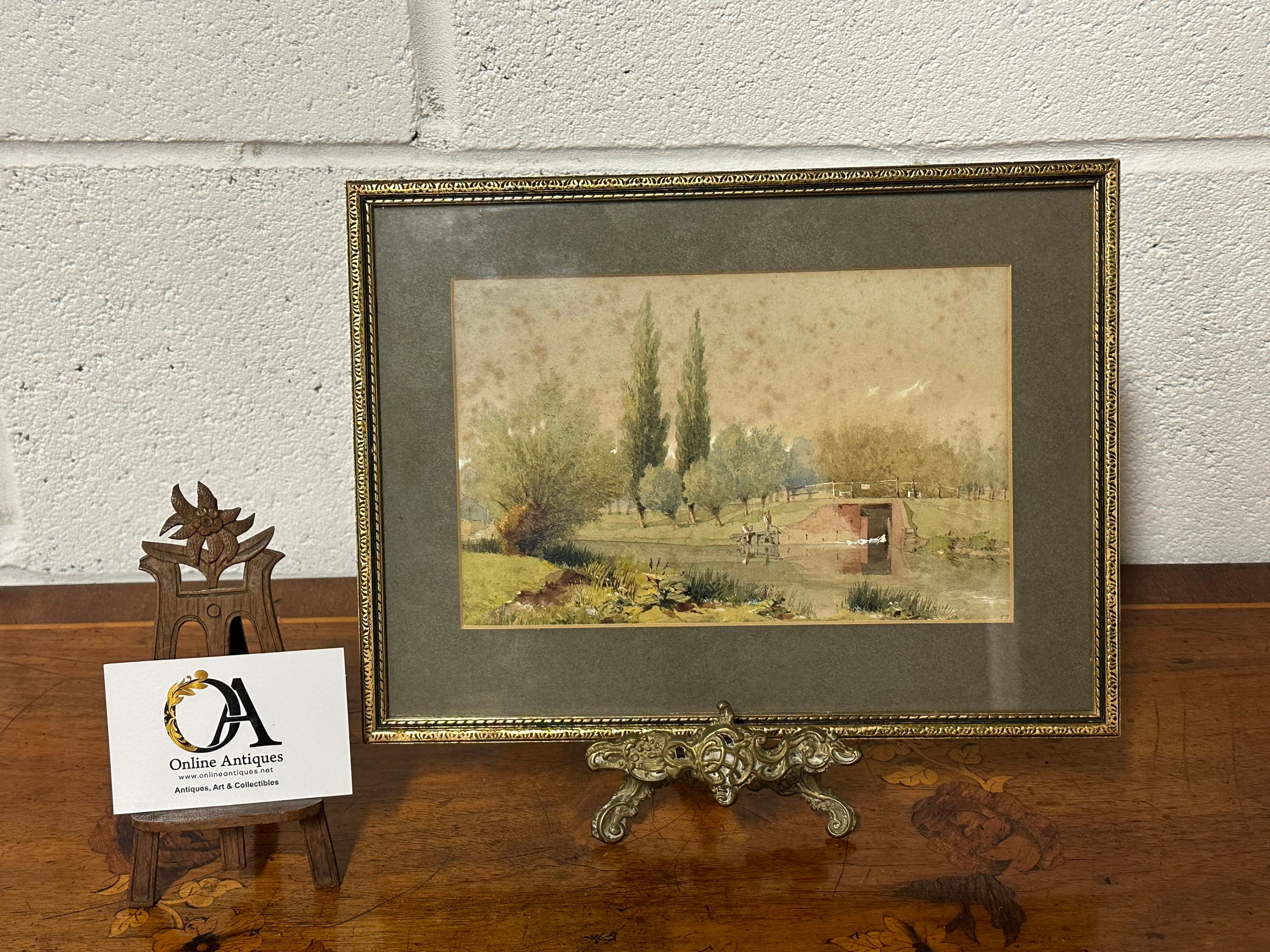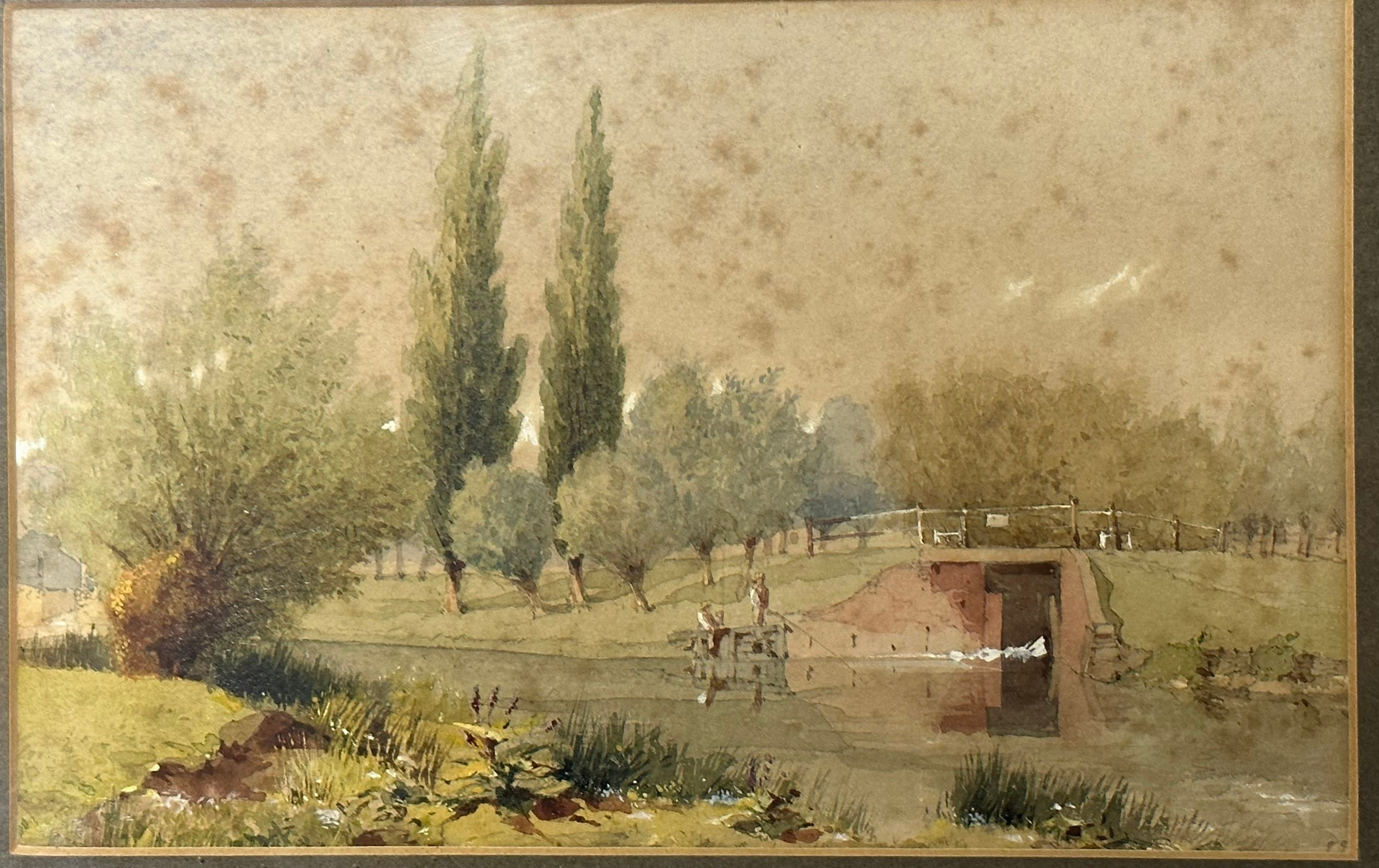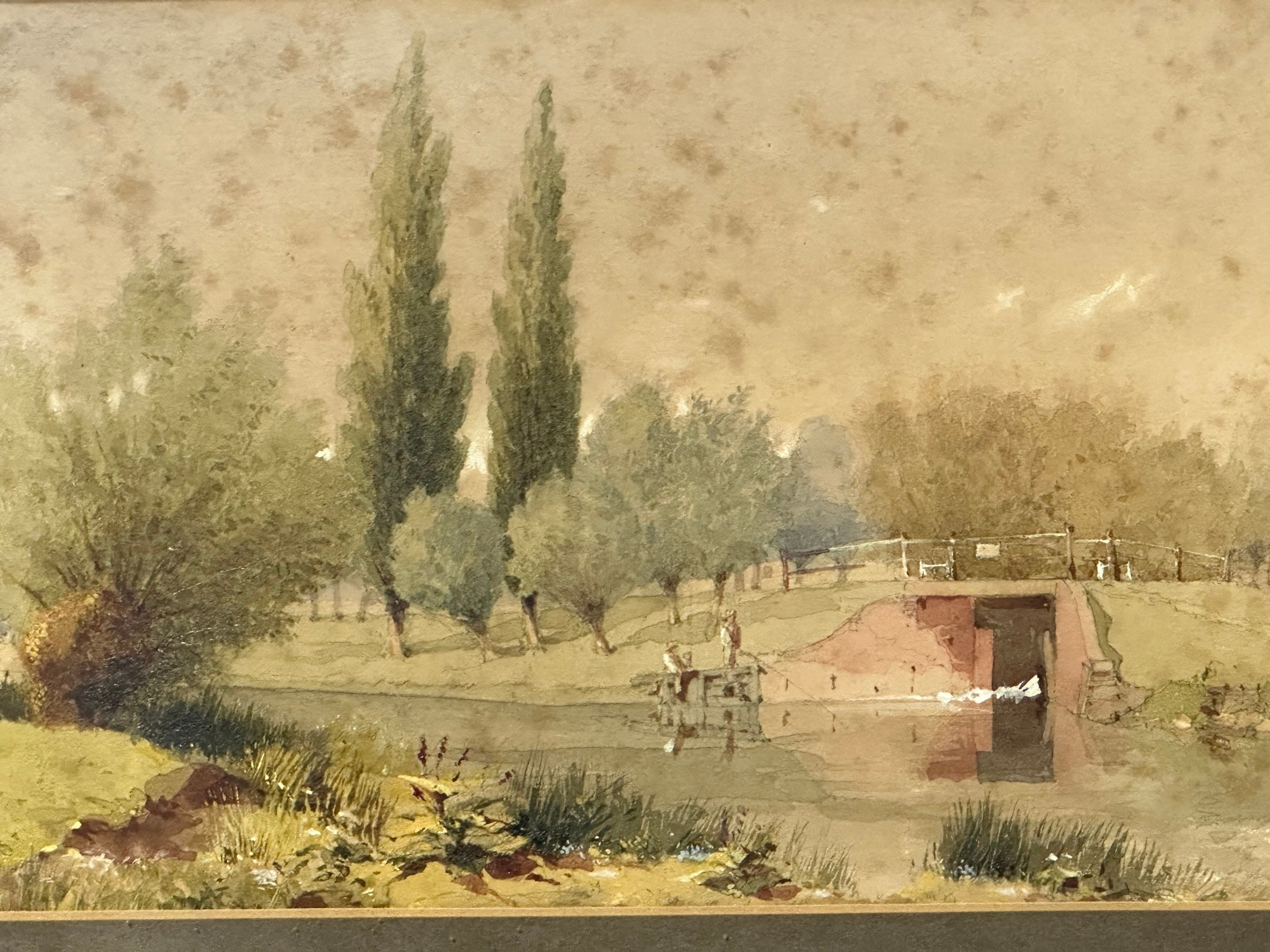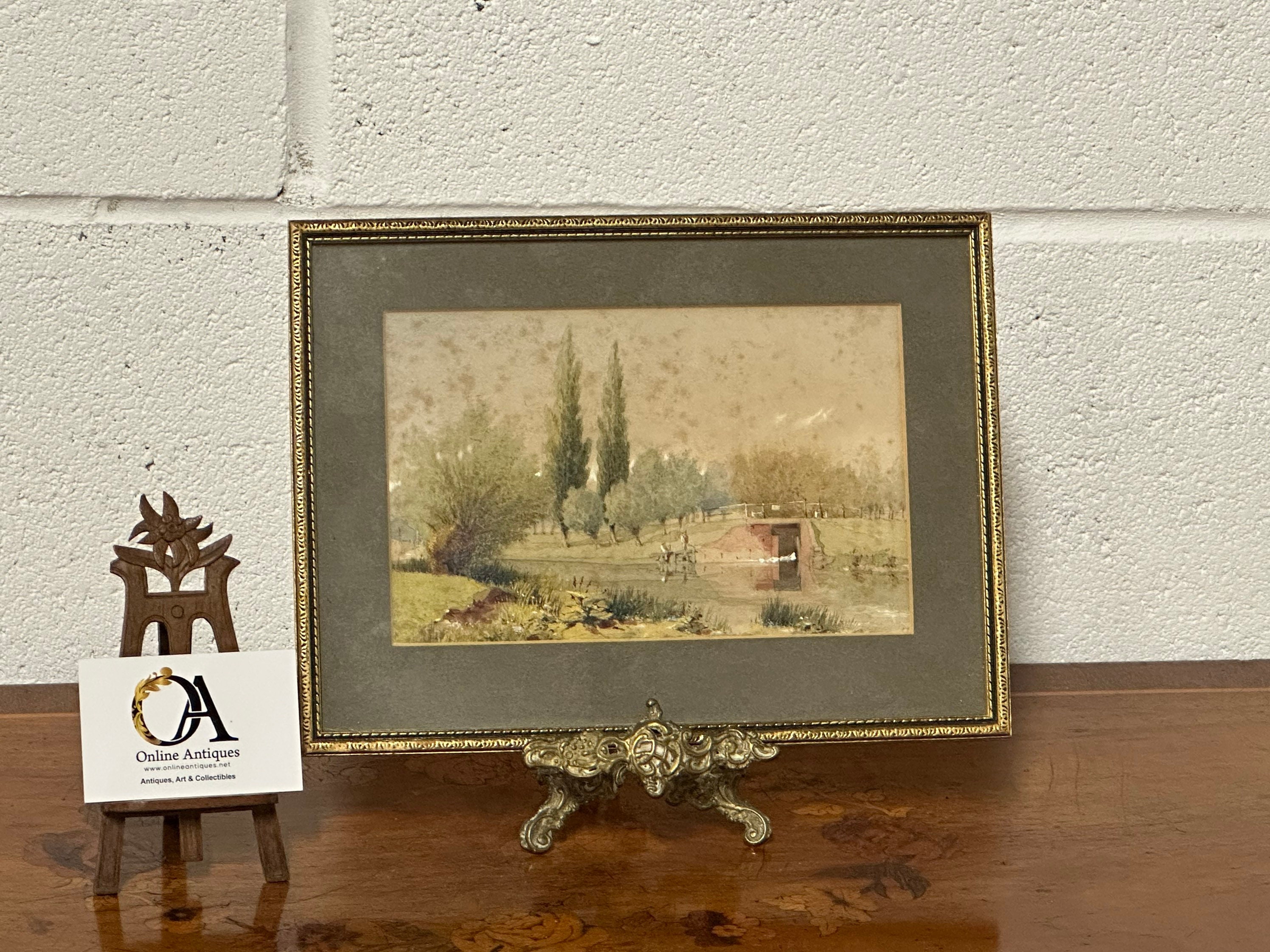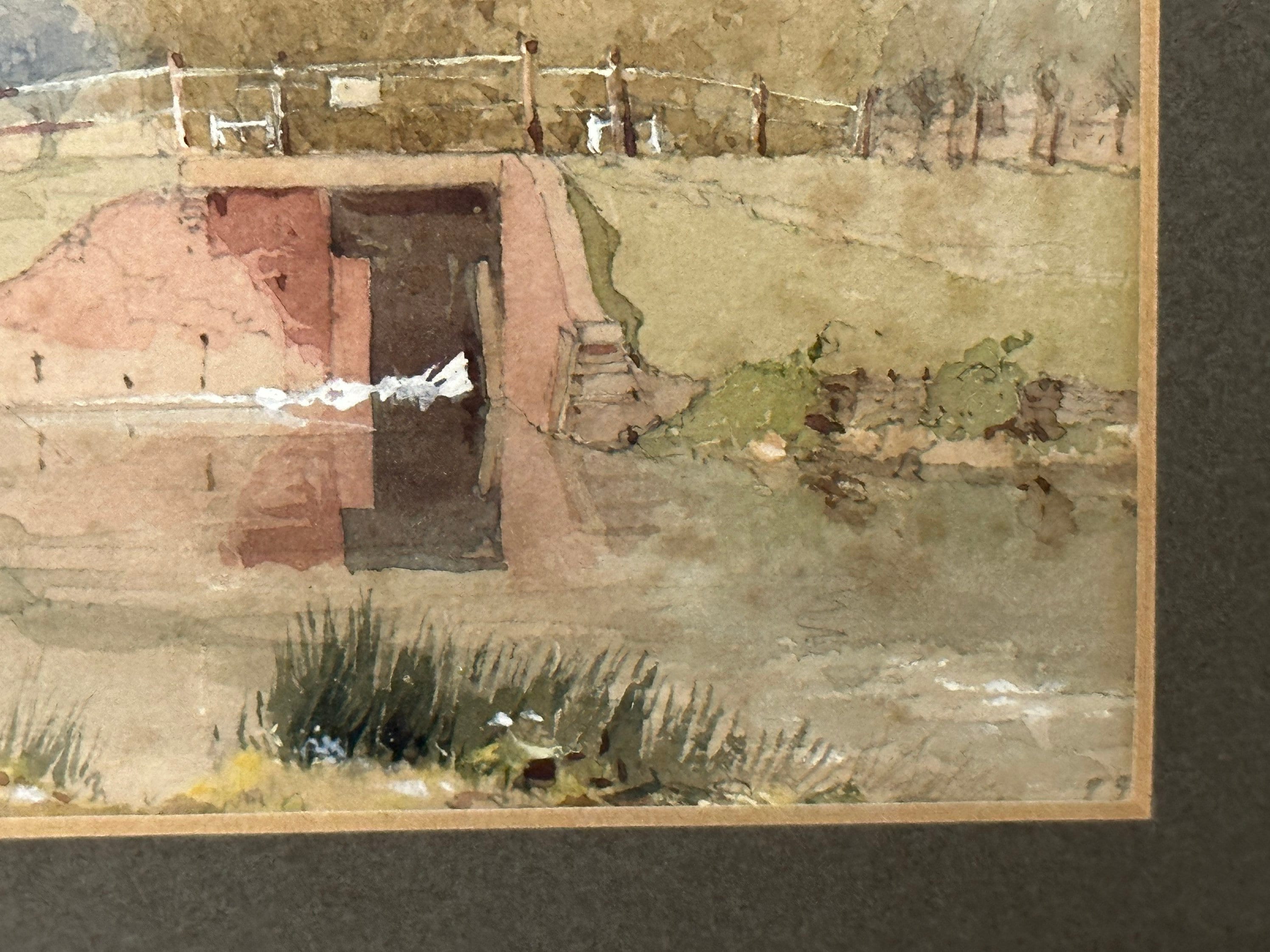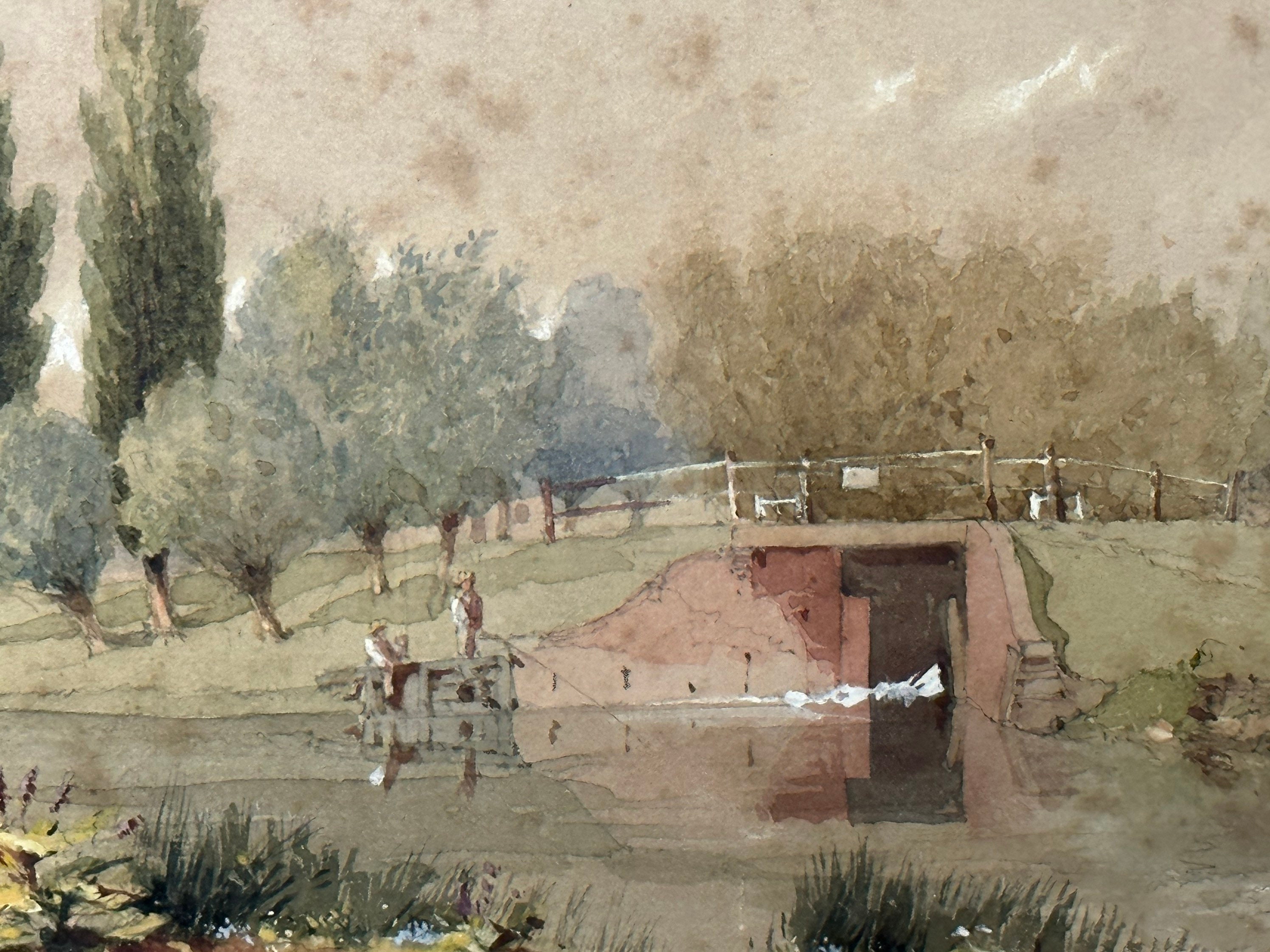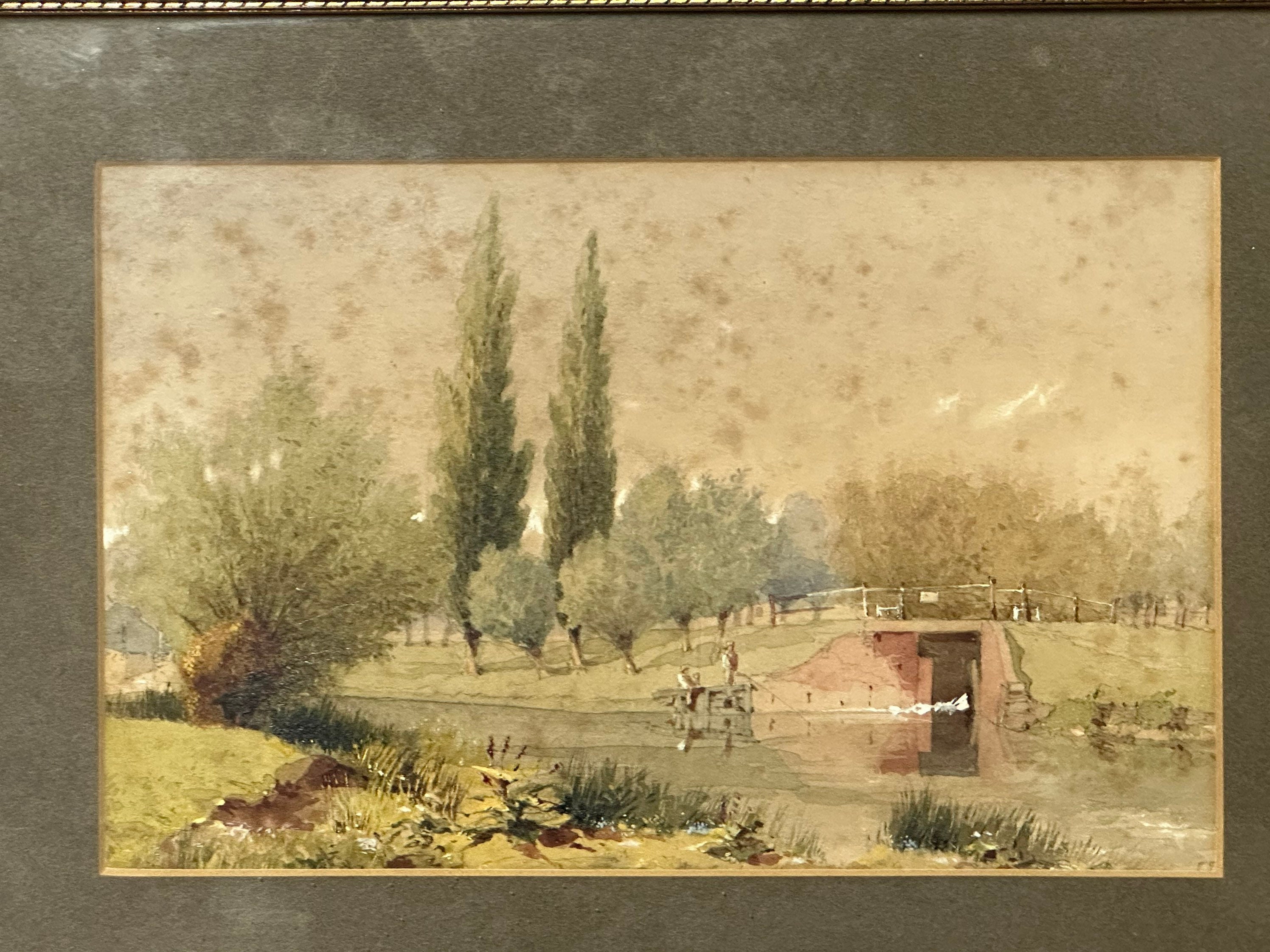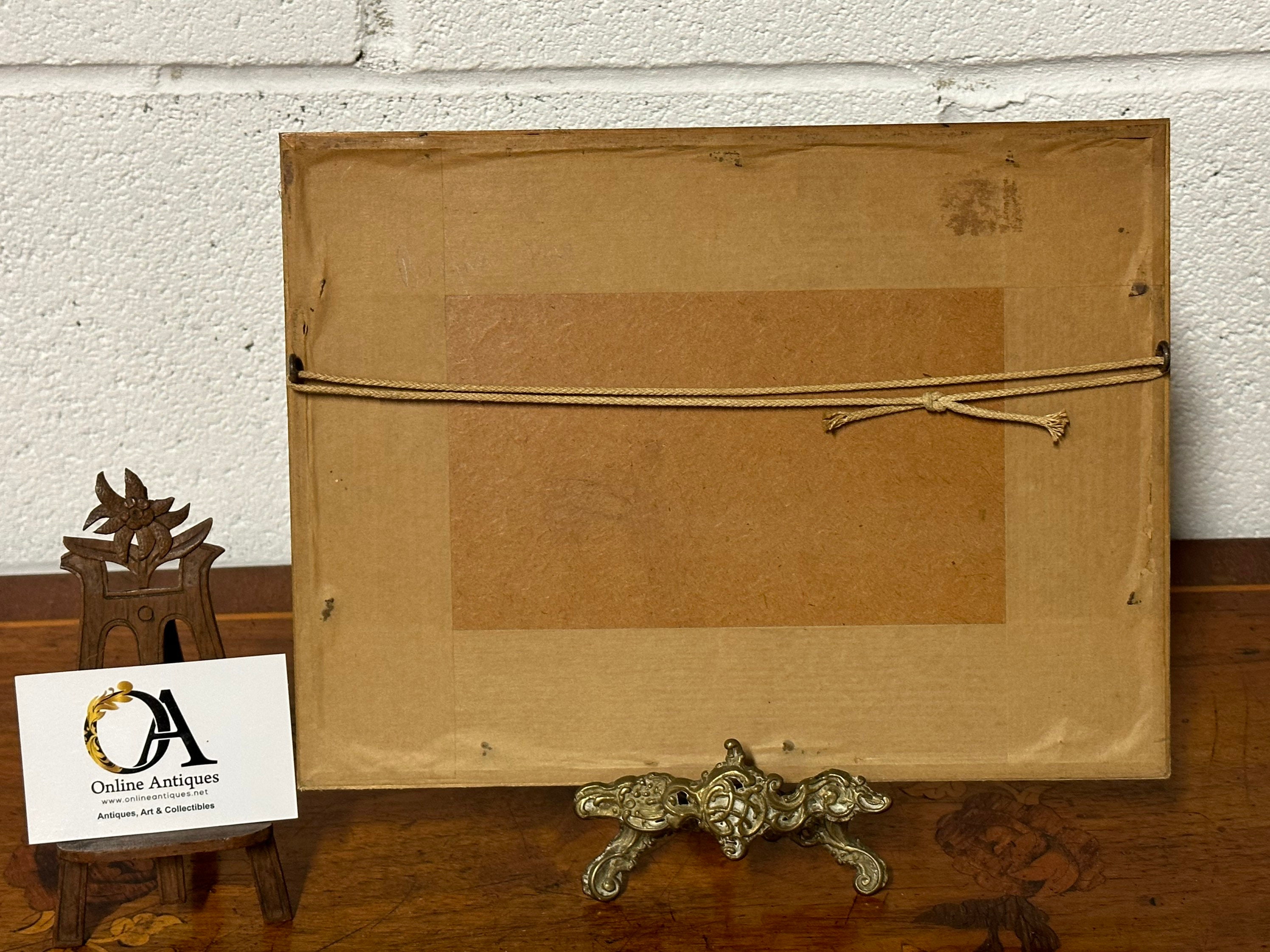Original 19th Century Watercolour of Bedford Ouse Area by Thomas Jobson Jackson
$175.25
Original 19th Century Watercolour of Bedford Ouse Area by Thomas Jobson Jackson.
A scene of the river in Bedford signed by the artist under the mount
Measures approx 28.5 x 22cm
Has foxing
Thomas Jobson Jackson was born on the 12th February 1820 at Wisbech, Cambridgeshire. He was the fifth son of the Rev. Jeremiah Jackson, J.P. for the Isle of Ely, first headmaster of Wisbech Grammar School and afterwards, Prebendary of Brecon, vicar of Elm-cum-Emneth, and at one time Fellow of St. John’s College, Cambridge. The Rev. Jackson fathered 16 children, seven of them dying early. His mother Mary Ann was the daughter of the Rev. Robert Willan, vicar of Cardington when John Howard the Prison Philanthropist was Lord of the Manor.
He came to Bedford about 1846 and being an Architect by profession, he established a practice in Bedford and for a few years acted as County Surveyor. Among his more important works was the laying out of Bedford Cemetery, assisted by John Usher, even to the planting of the trees and shrubs, and there can be no doubt that much of the beauty of our incomparable Cemetery is due to the excellent judgement exercised by Thomas Jobson Jackson in the first stages of that work. He also designed the chapels and the red Gothic entrance lodge of the Cemetery. The chapels built of stone, under one roof, in the Gothic style of architecture, divided the consecrated from the un-consecrated part of the ground. The entire cost was £5,397.
In the early days of his life in Bedford, he lived with his younger brother William at 15 Potter Street. In 1867, he married Elizabeth Cox Wing at Brighton. She was the widow of Samuel Wing whose brother was the well-known Bedford Architect James Tacy Wing, who with Thomas designed the chapel at the Bunyan Meeting, Mill Street (1849-1850).
Some of his best works include the restoration of Elstow Church, as well as the restoration of Thurleigh Church and St Mary’s, Bedford, and he was always careful to protect and not change the character of the work.
Thomas was a man of wide-ranging abilities, of friendly nature, and fond of adventure and travel. He was a brilliant artist, although, as he said so often, ‘he only dabbled in painting as a pleasurable pastime’. Despite his protestations, he had produced work of the highest quality in both oils and watercolours. He worked quickly and always he captured the impression of the moment; in quiet settings by Bedfordshire streams or in Derbyshire dales, in secluded Spanish haunts, or by Italian rivers.
While he was in Normandy for a holiday, he made a few sketches of Cherbourg, the great French arsenal.
The feeling between the UK and France was none too friendly at that time. Sitting near the forts he had nearly finished a sketch, when a guard came and tapped him on the shoulder telling him that he must consider himself a prisoner and go with him in the fortress. The guard thought him as a spy checking out the French defences for the English Government. Thomas having his wits about him did not reply to the strange summons but looked up calmly into the guard’s face, and said, “What a handsome man you are”. The guard was flattered and tried to keep up his authority, but Thomas kept up his fire. “Really the more I look at you the more am I struck with your artistic appearance, your heroic bearing, and your noble features! Let me just sketch you before you remove me hence!” No French guard could resist such flattery; and, as he posed himself to look his best, Thomas with a few bold strokes in a couple of minutes produced a portrait, which made the soldier an inch or two taller. Apparently the guard was thrilled. When he had praised the picture many times, he wanted it for himself just to take home to his family. This was Thomas’s chance. He told him he could not part with it that he was only making sketches for his own enjoyment of French places and people. He was no spy, he cared not for their shining forts, and he would throw the fort sketches into the sea, saying he would throw them in ragged strips over the pier into the waves below; but he could not part with the handsome guard’s portrait. Oh, how the soldier wanted it! After a while, he quietly said that if Monsieur would give him that exquisite portrait and promise never again to sketch the forts, he would release his prisoner and say not a word about the affair. Showing his reluctance, Thomas gave in and saved himself from serving a lengthy prison sentence as a spy.
He was an athlete, a keen sportsman, and a soldier. He held a commission, not only in the first Volunteer Regiment in this county, but also being a Captain in the Duke of Manchester’s Light Horse in the 1860s. Not many men rode a horse more gracefully or jumped a hedge with more courage. He was fond of horses and knew all their points; his sketches of horse jumping, and of the hounds in full cry were natural with life and action. On one occasion, he bought a horse in Madrid and rode to Rome, crossing the Pyrenees. On the way, he met with several adventures in out-of-the-way villages, and afterwards he entertained his friends with his tales.
He often attended meets of the Oakley Hounds. At one event he met with an accident in the hunting field. There were no immediate serious results, but apparently he had suffered some shock to the system and after that time, his health got worse.
He was a magistrate for the Borough, and was in the first group of Aldermen elected by the Bedfordshire County Council; a Guardian of the Poor Union and a member of the Burial Board. He was a Churchman and a Liberal, a constant supporter of Mr. Whitbread, and a Governor of Bedford Infirmary.
For the last twelve years of his life, he had suffered poor health, and he died on 7th April 1894, aged 74, at his residence in Cardington Road. He was buried on 13th April at Foster Hill Road Cemetery. Grave ref: K4.14
Will be well packaged and sent via Royal Mail signed for service
Note for USA customers
N.B as of Aug 2025 USA has introduced new import duty tariffs which are charged regardless of however much the item costs (previously it was only charged on items over $800 but this has now changed).So please be aware there will be some increase costs on shipping to take into account the import duties. Please feel free to message me if you are interested in purchasing this or other items and need any additional information with regards to shipping costs.
Thank you
Frequently Asked Questions
Does OnlineAntiques Ship Worldwide?
In most cases we do ship overseas from the UK depending on size and weight. However if we haven’t listed a shipping cost to your country please message us as we are always happy to obtain an individual shipping price
How Quick Does OnlineAntiques Dispatch items ?
In most cases we dispatch within 48hrs and we use either a 24hr or 48hr signed for delivery service. If the item is large, such as an item of furniture then it will take 5-7days as we will need to arrange a private courier
Gift wrapping and packaging
We package our items extremely well to ensure fragile items and artwork arrive safely. If you would like your purchase gift wrapped then please add a message or message us directly with details. We are always happy to help as much as possible for that special occasion.
Multiple purchases
If you are purchasing multiple items and we can package together, we can reduce postage/shipping costs. Please message us direct ahead of your purchase so we can make the necessary postal adjustments to your purchases.

